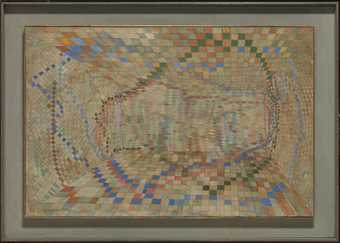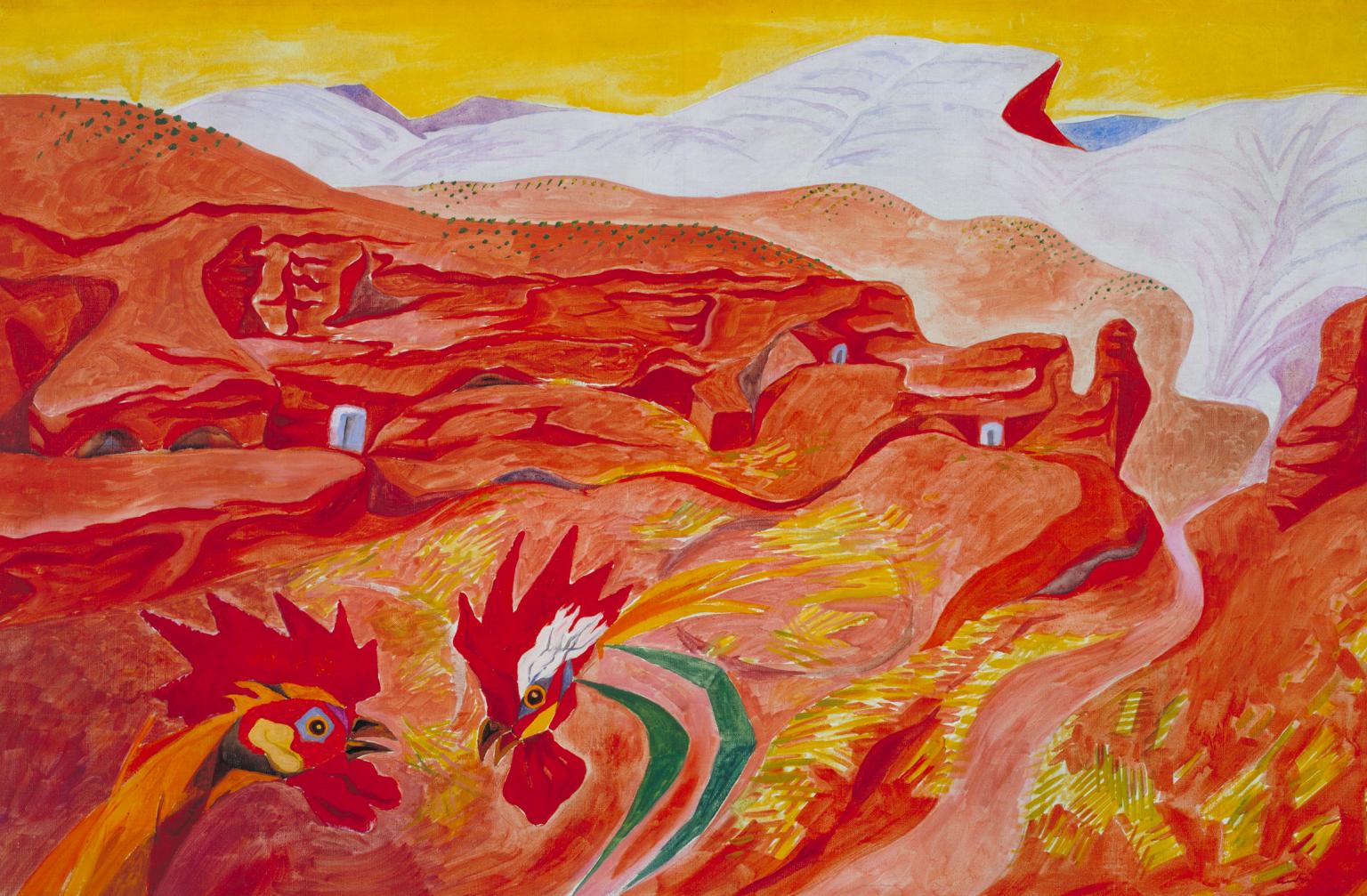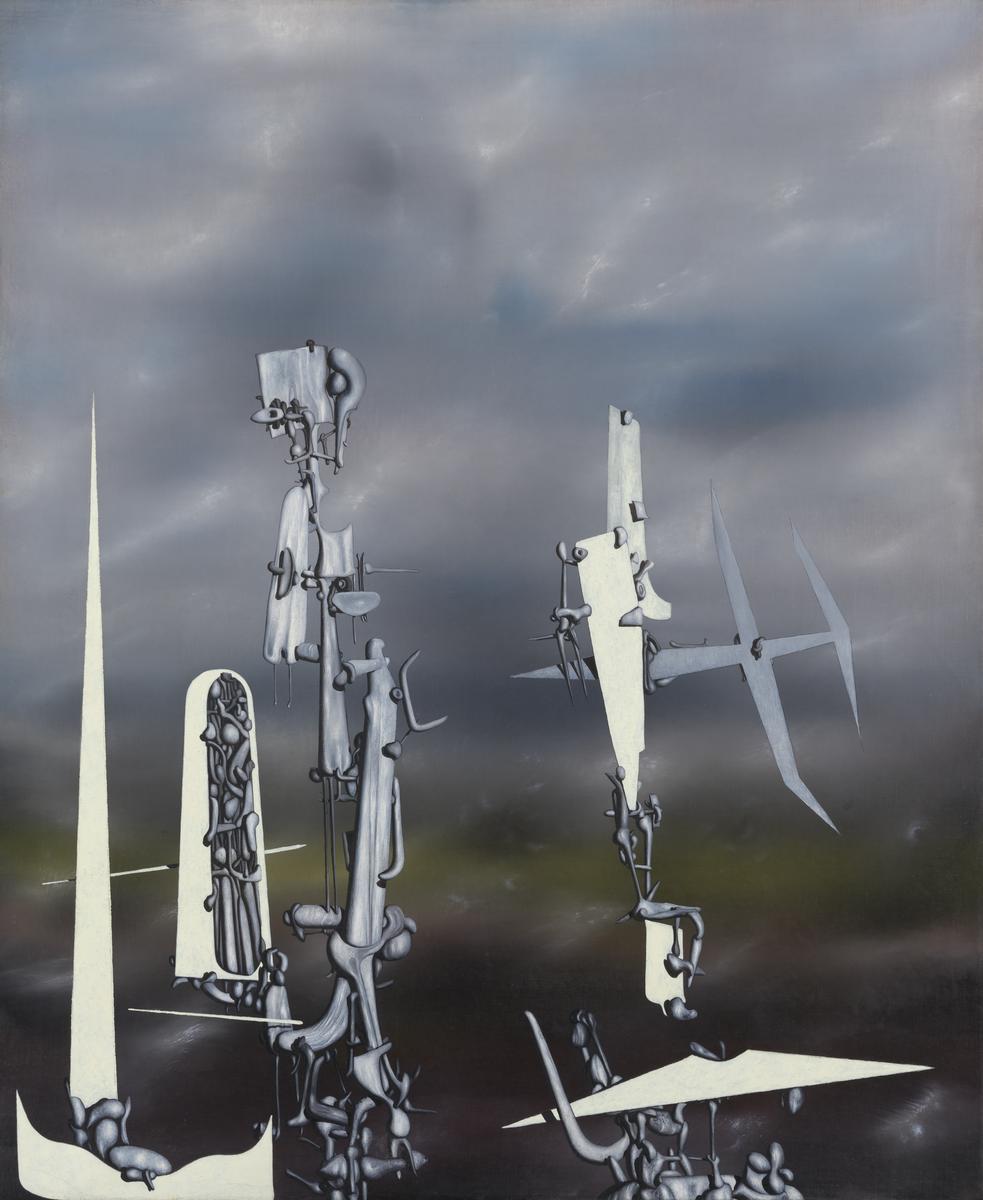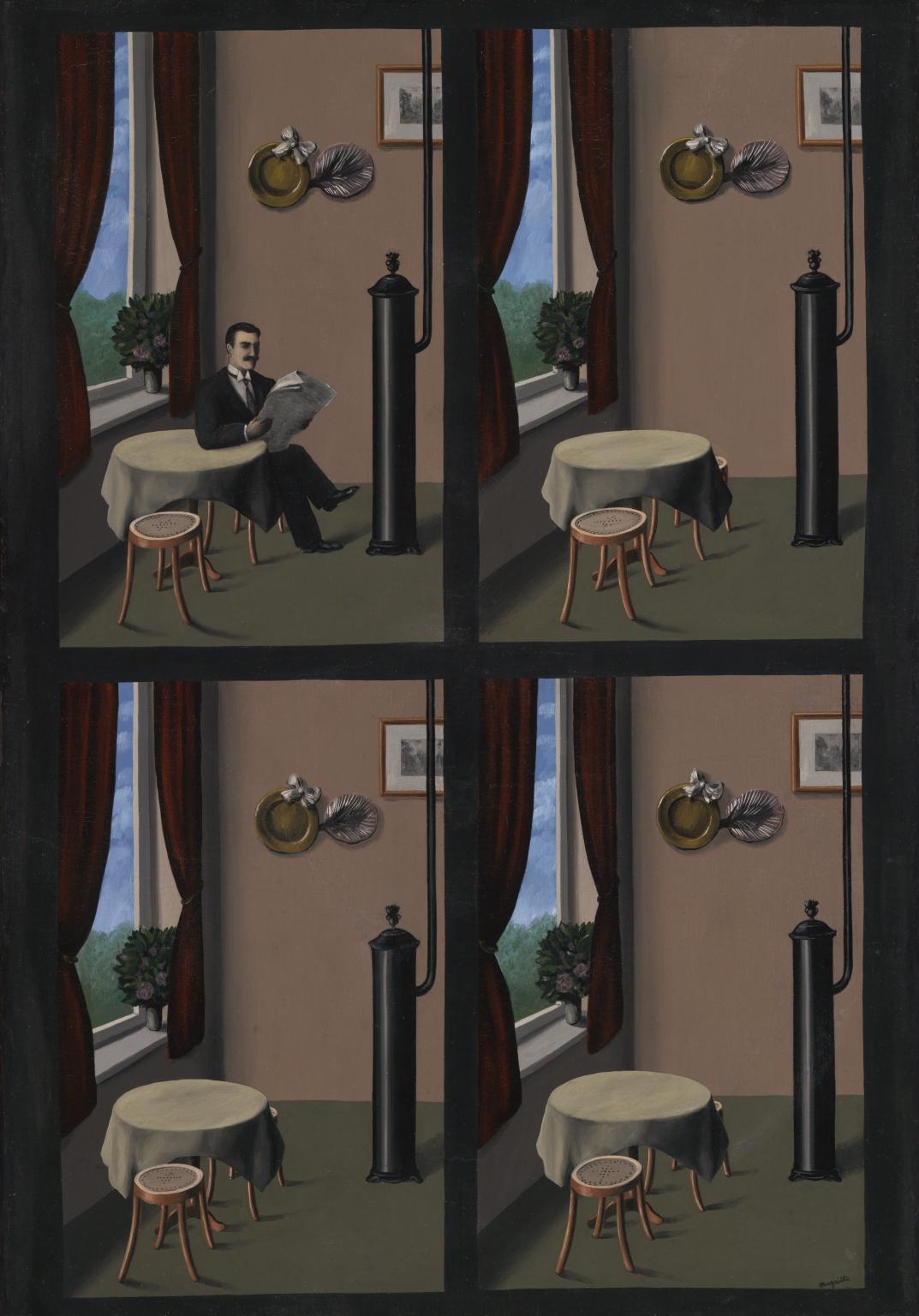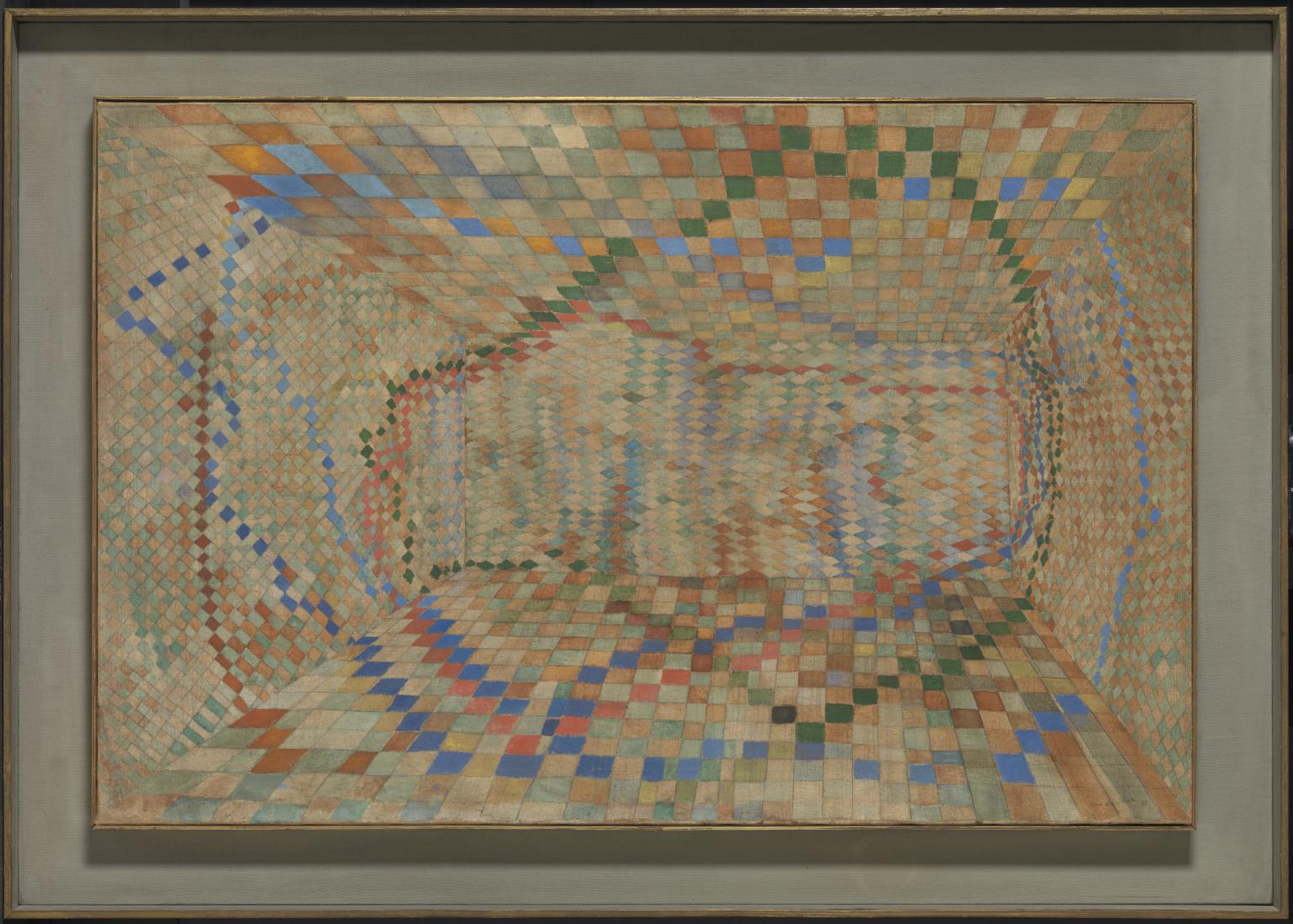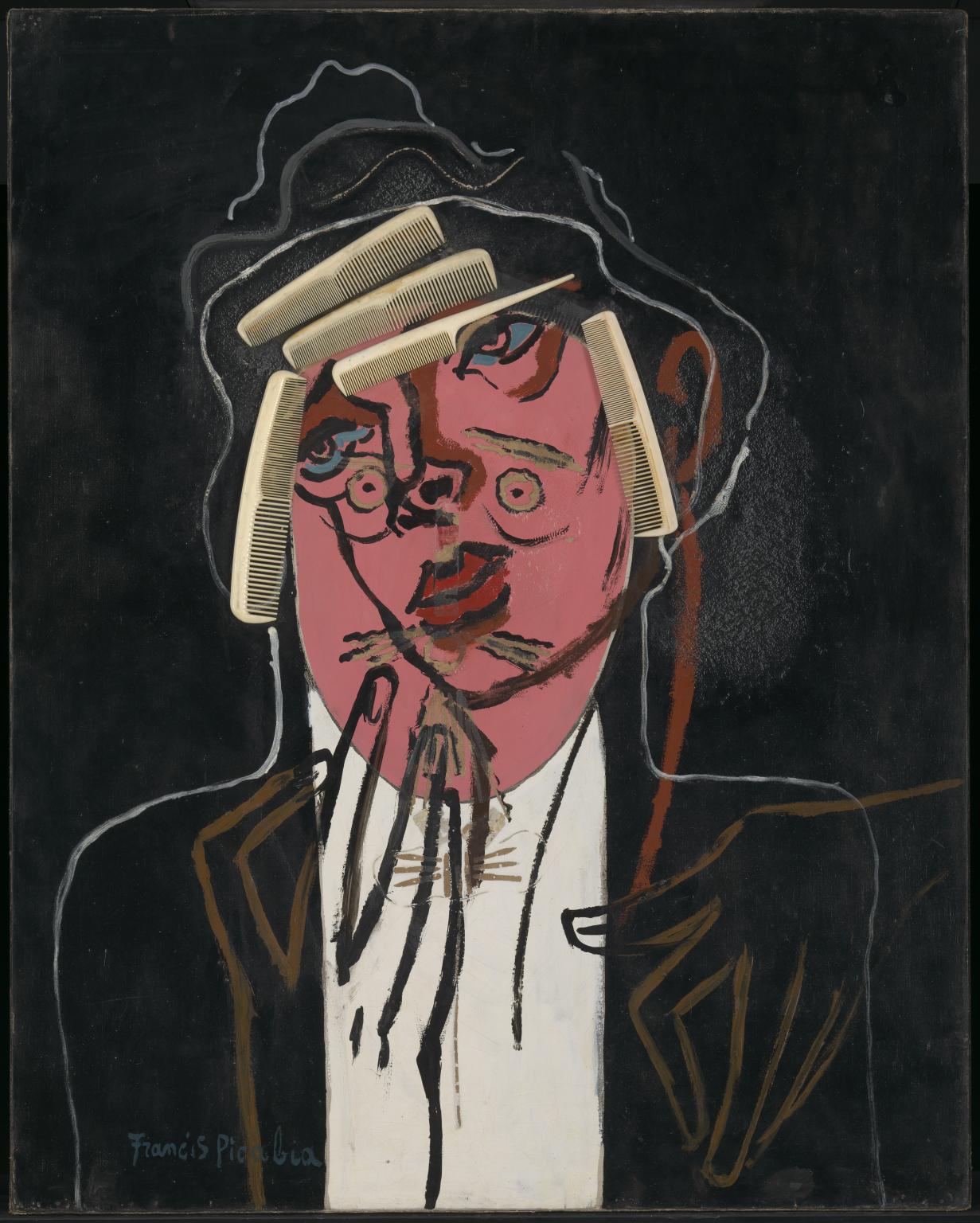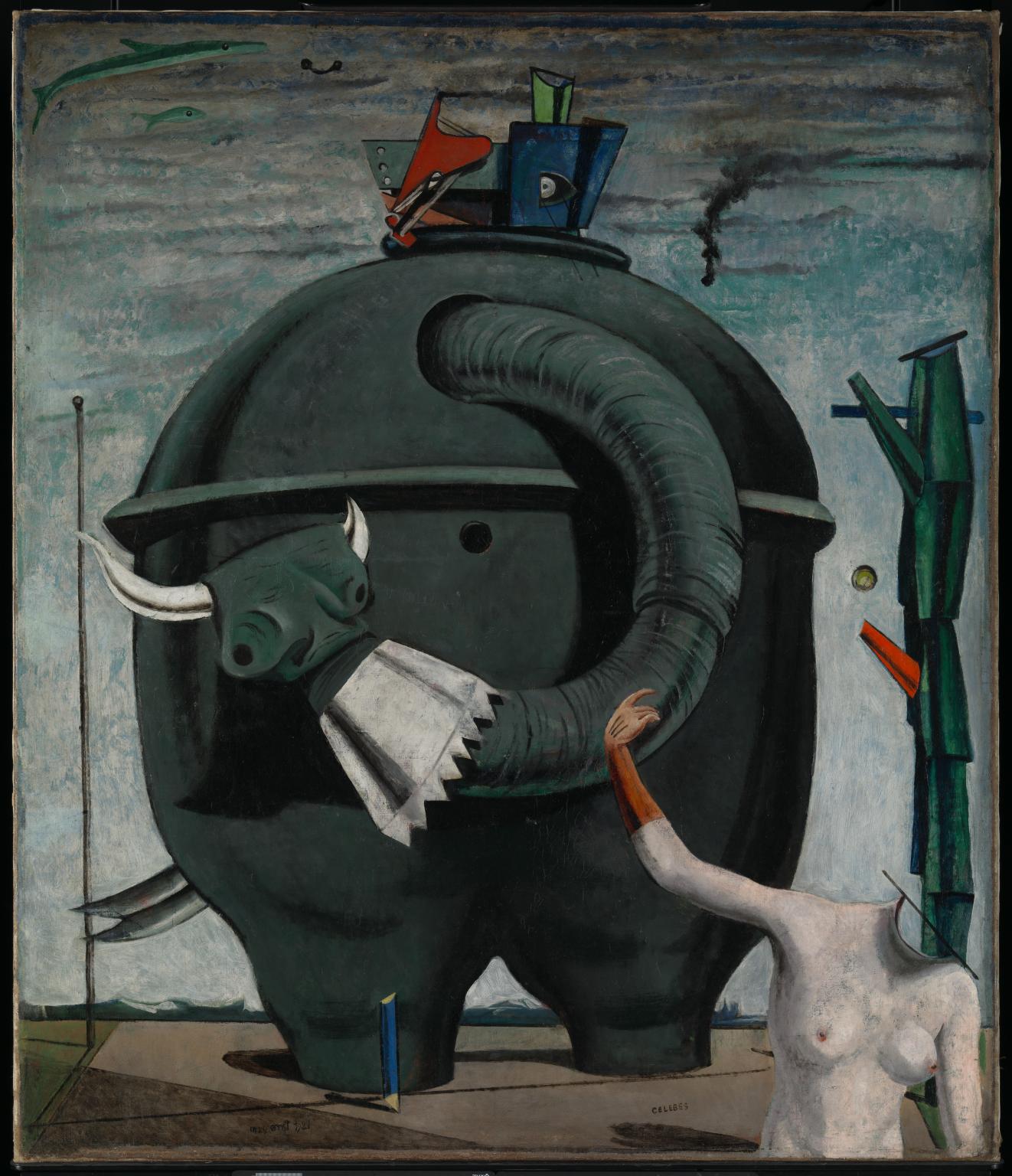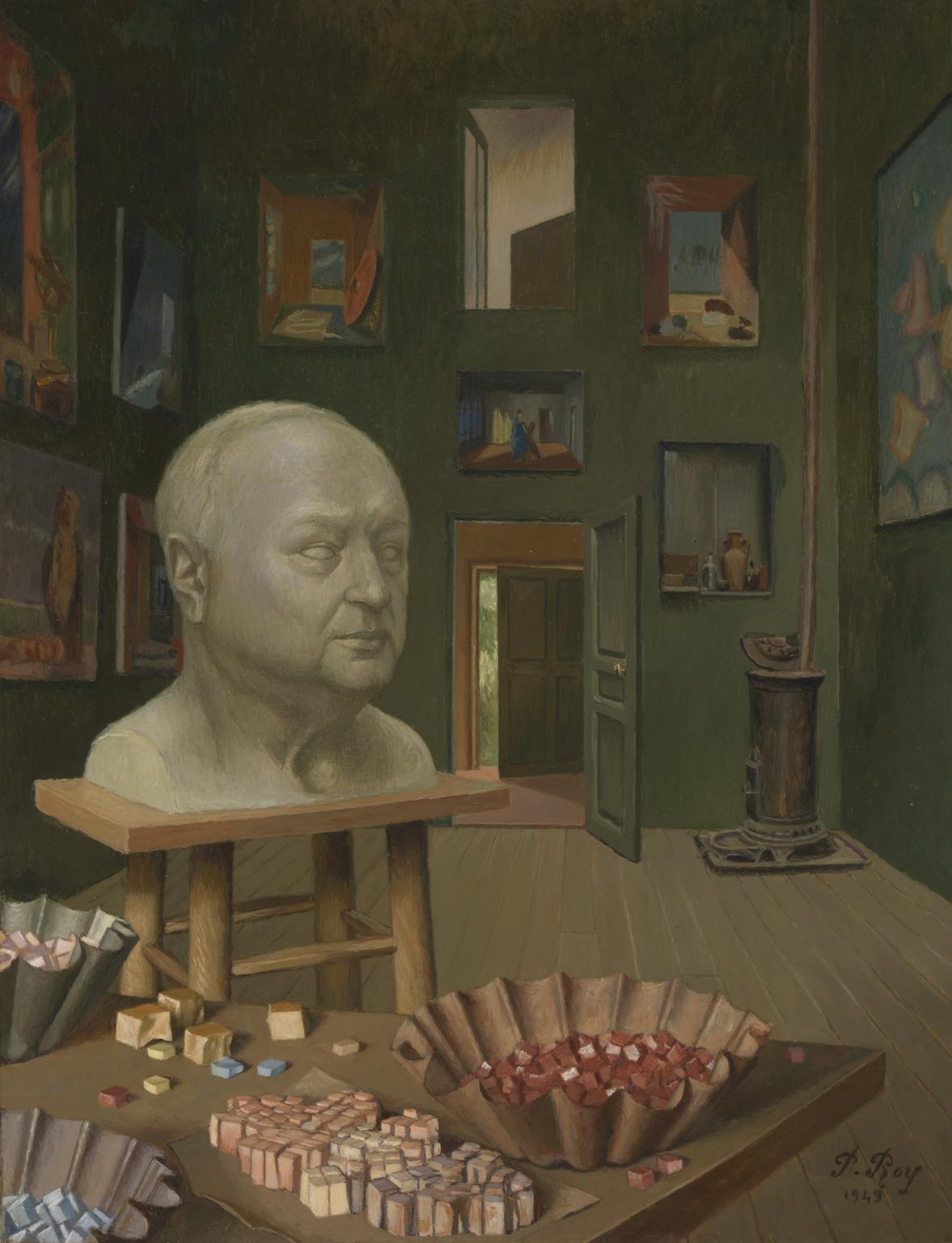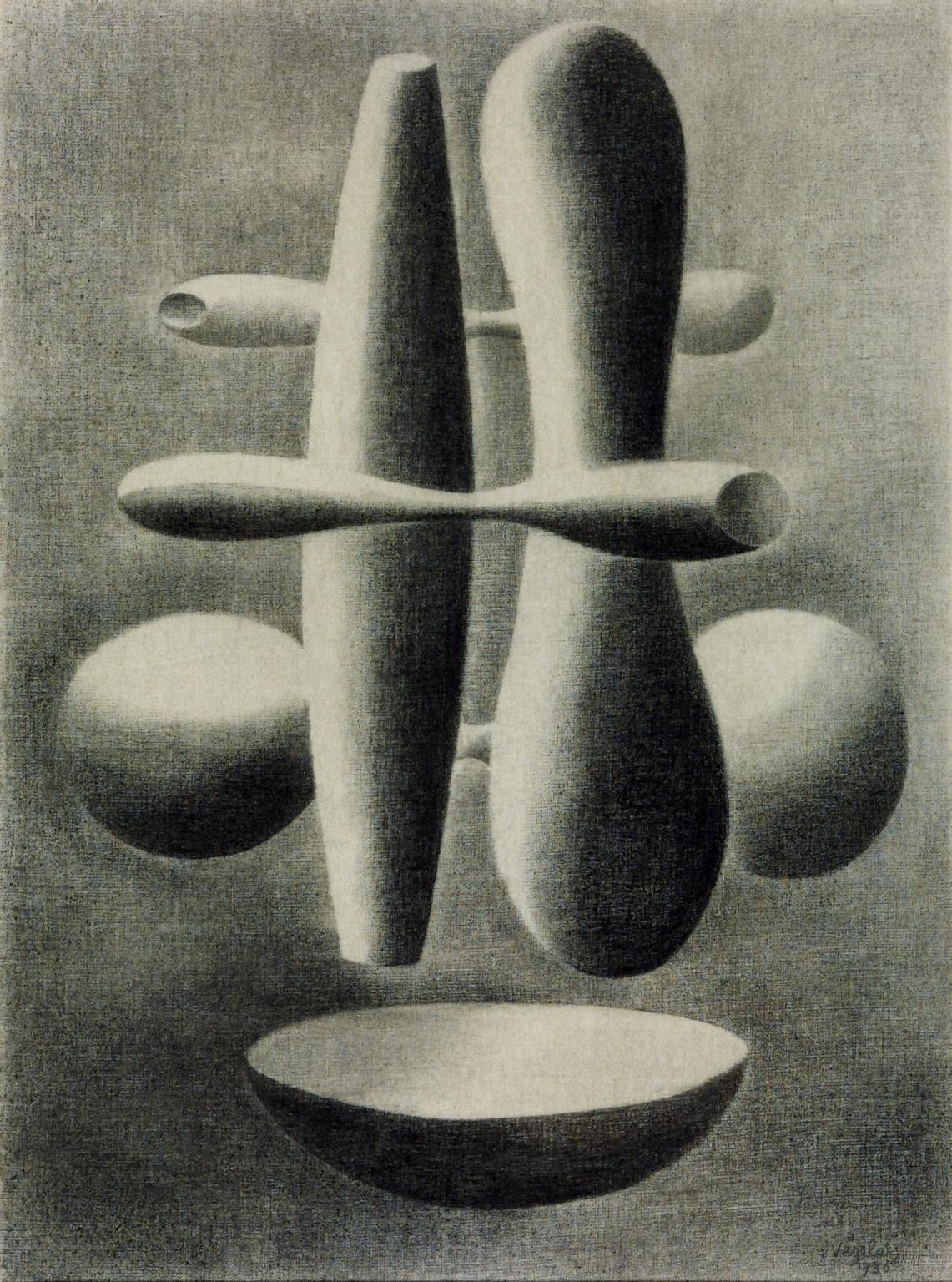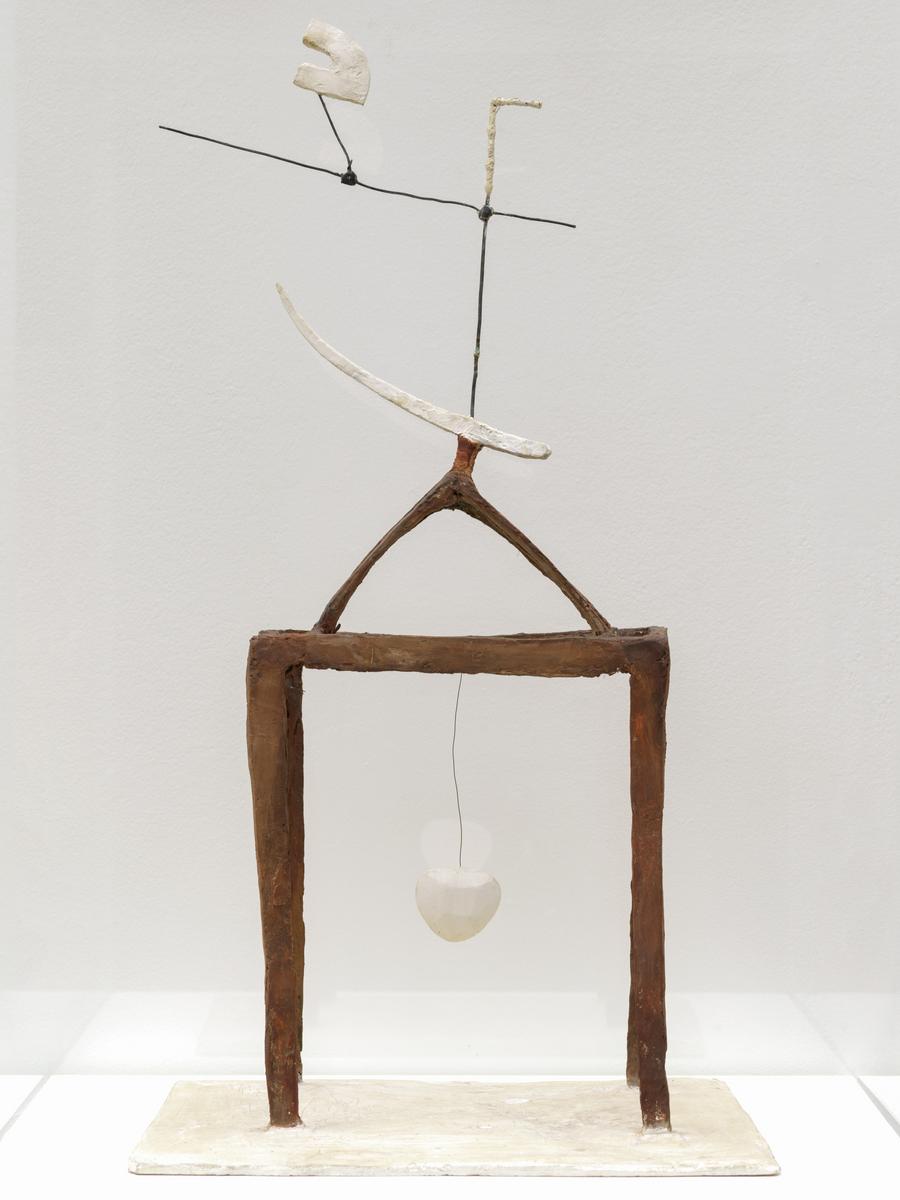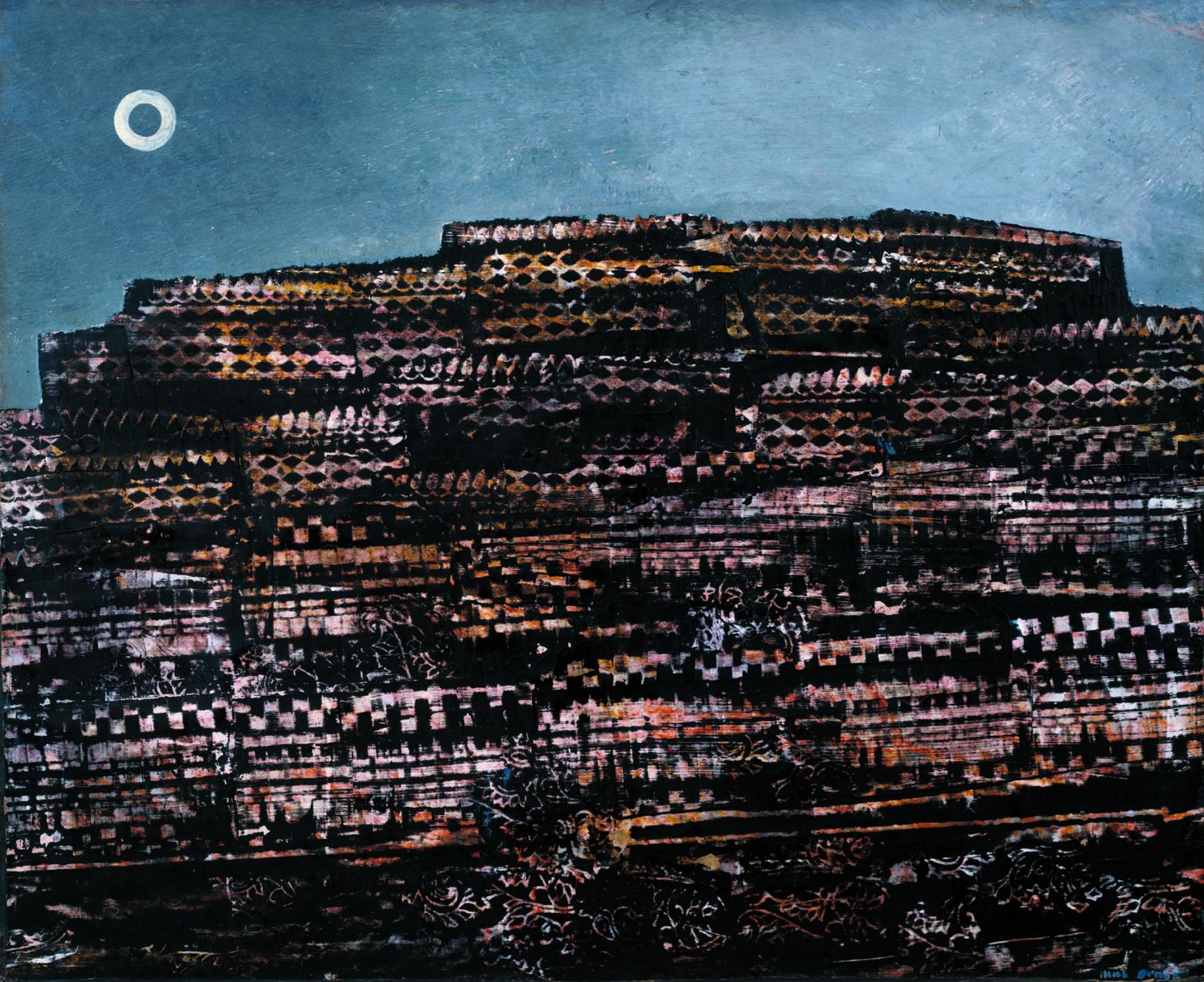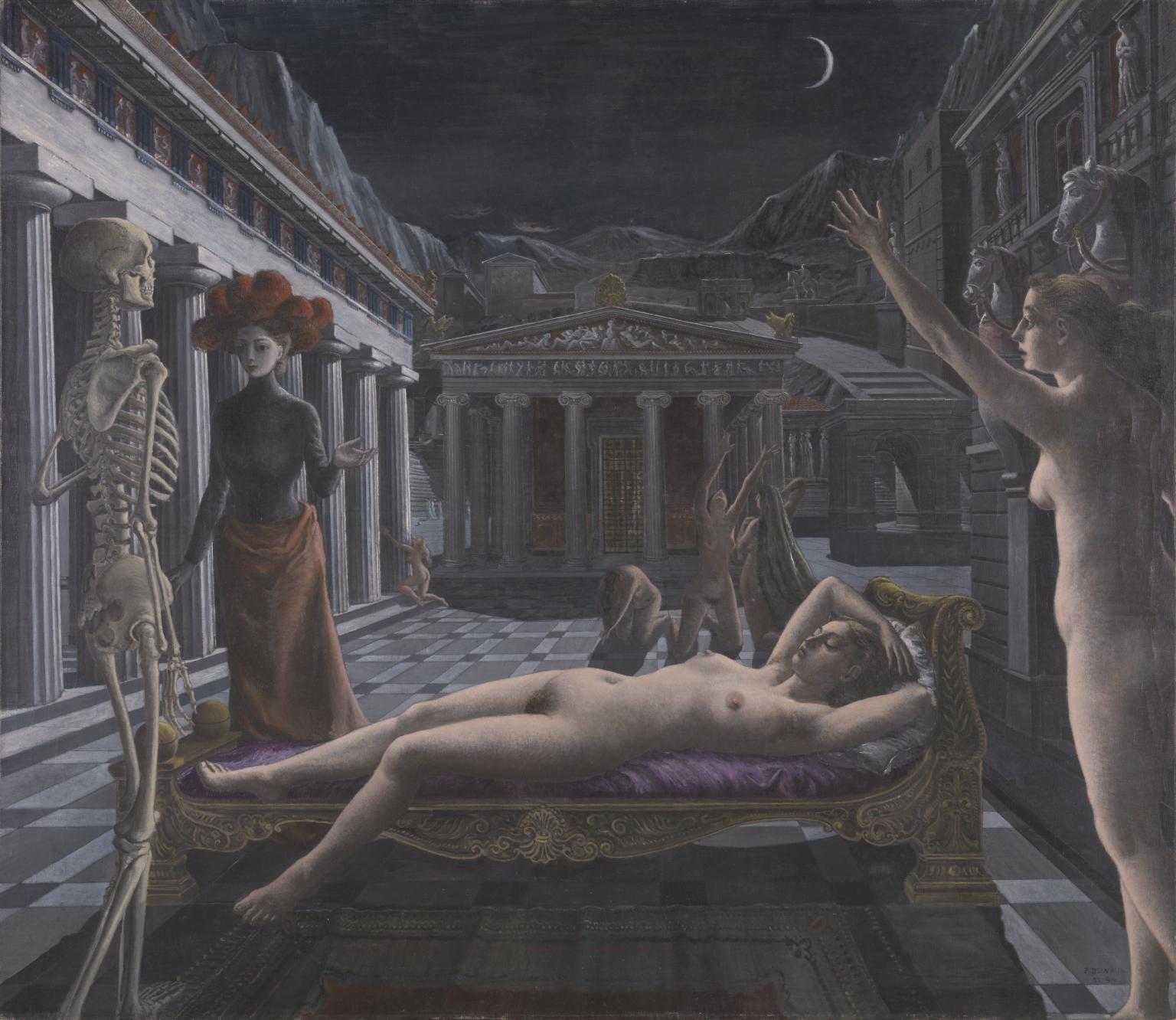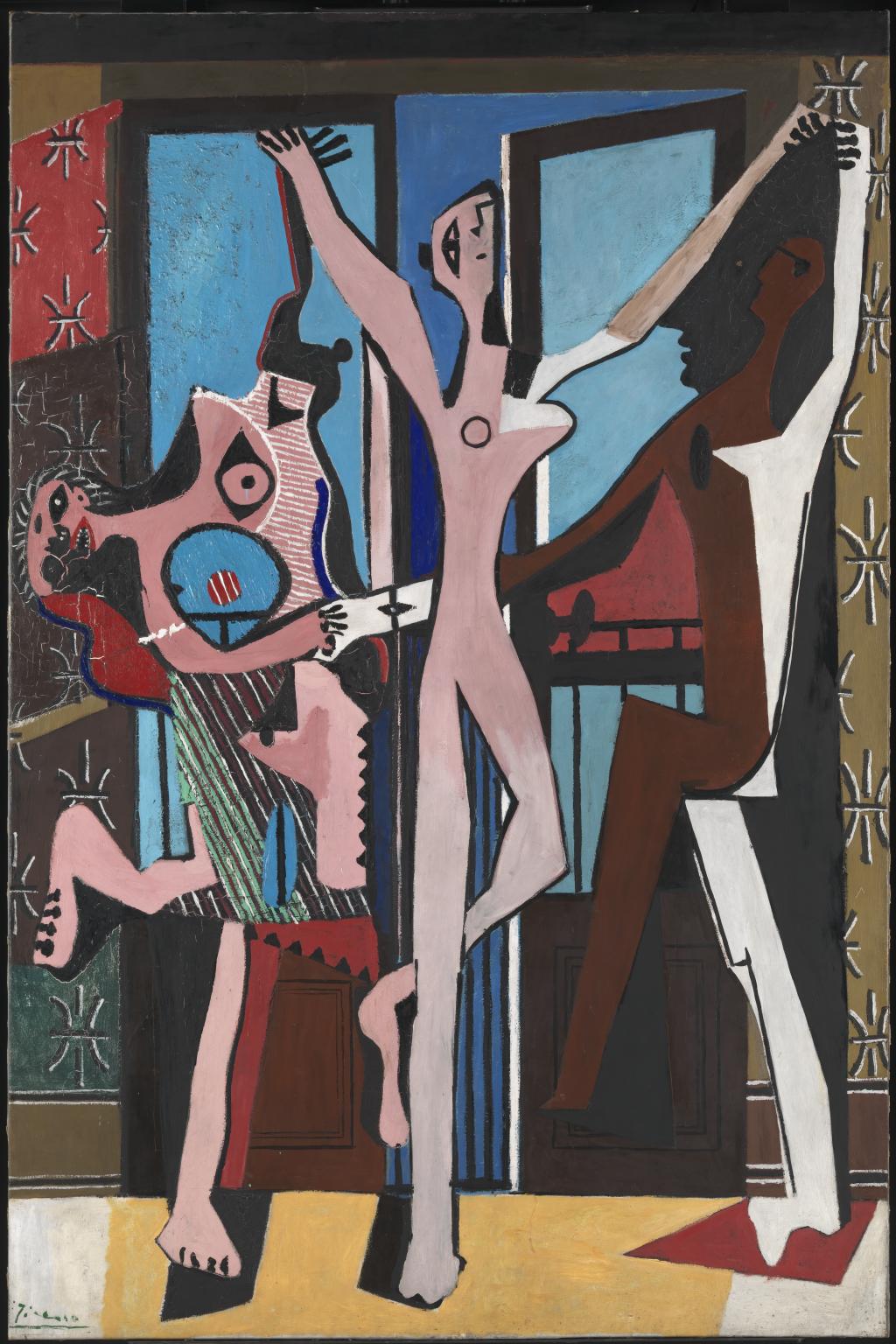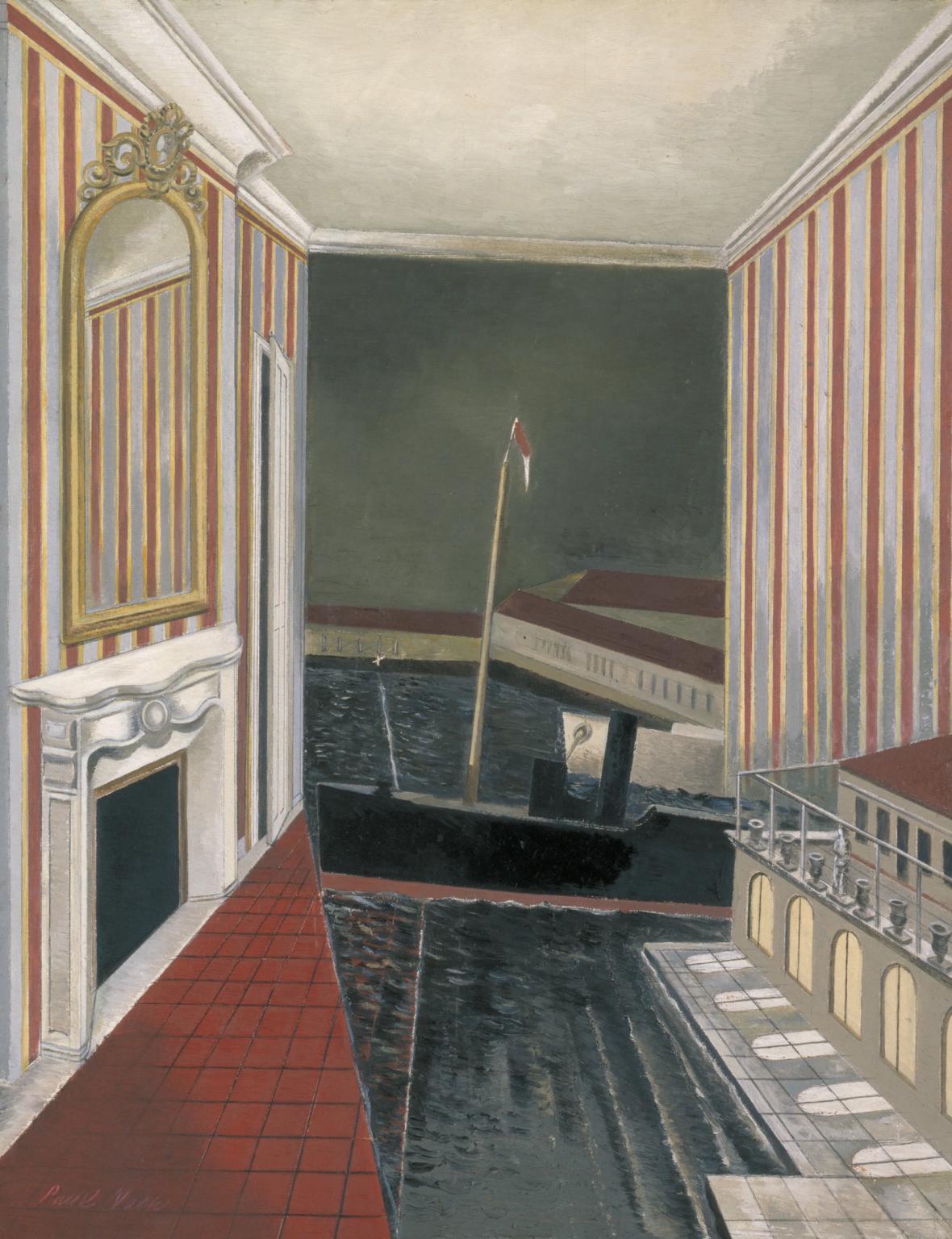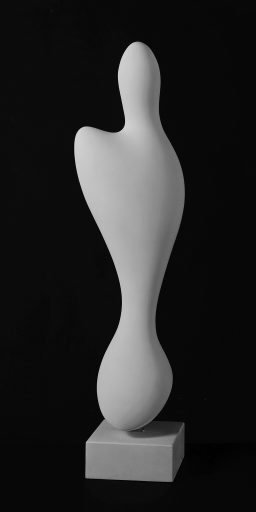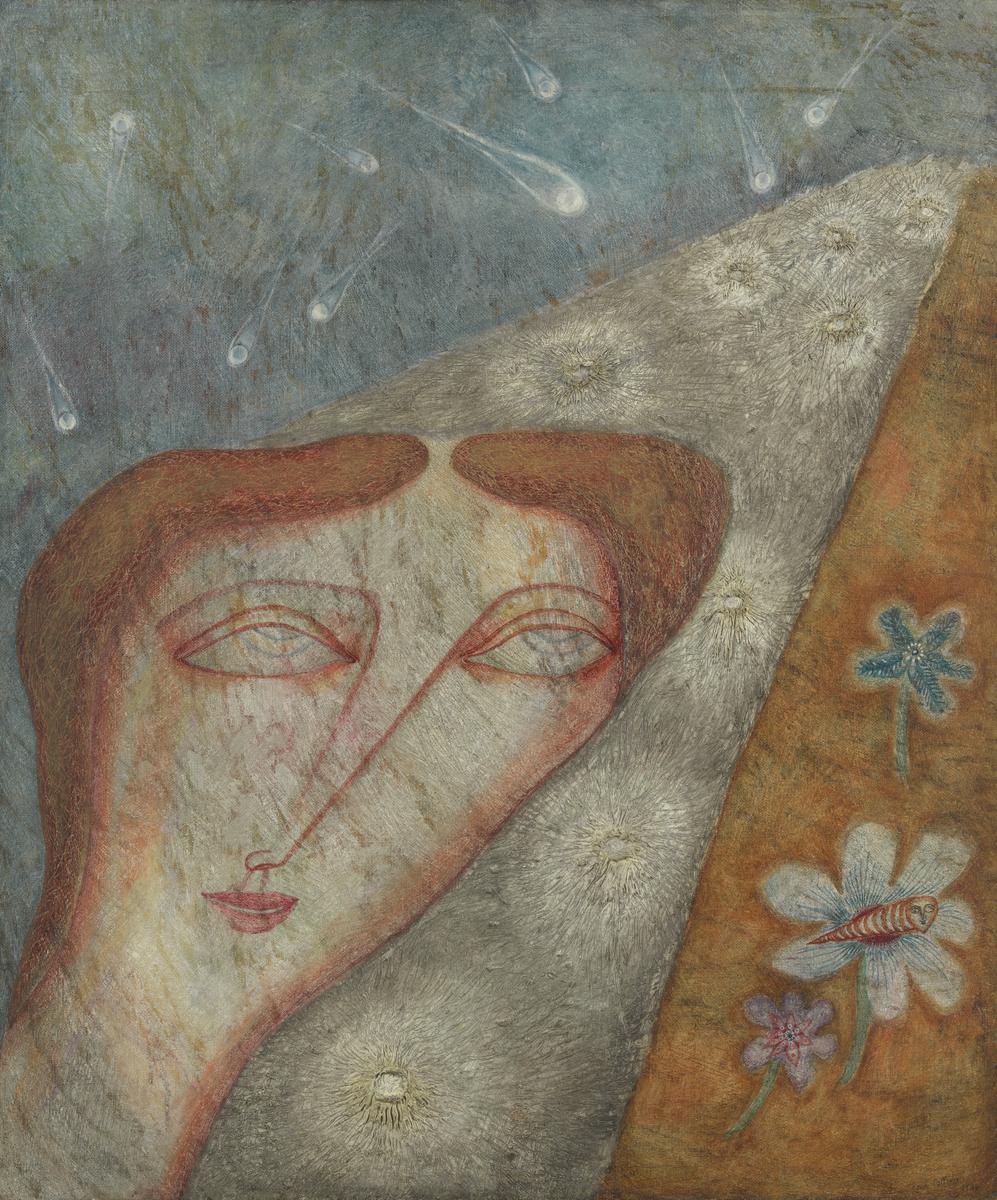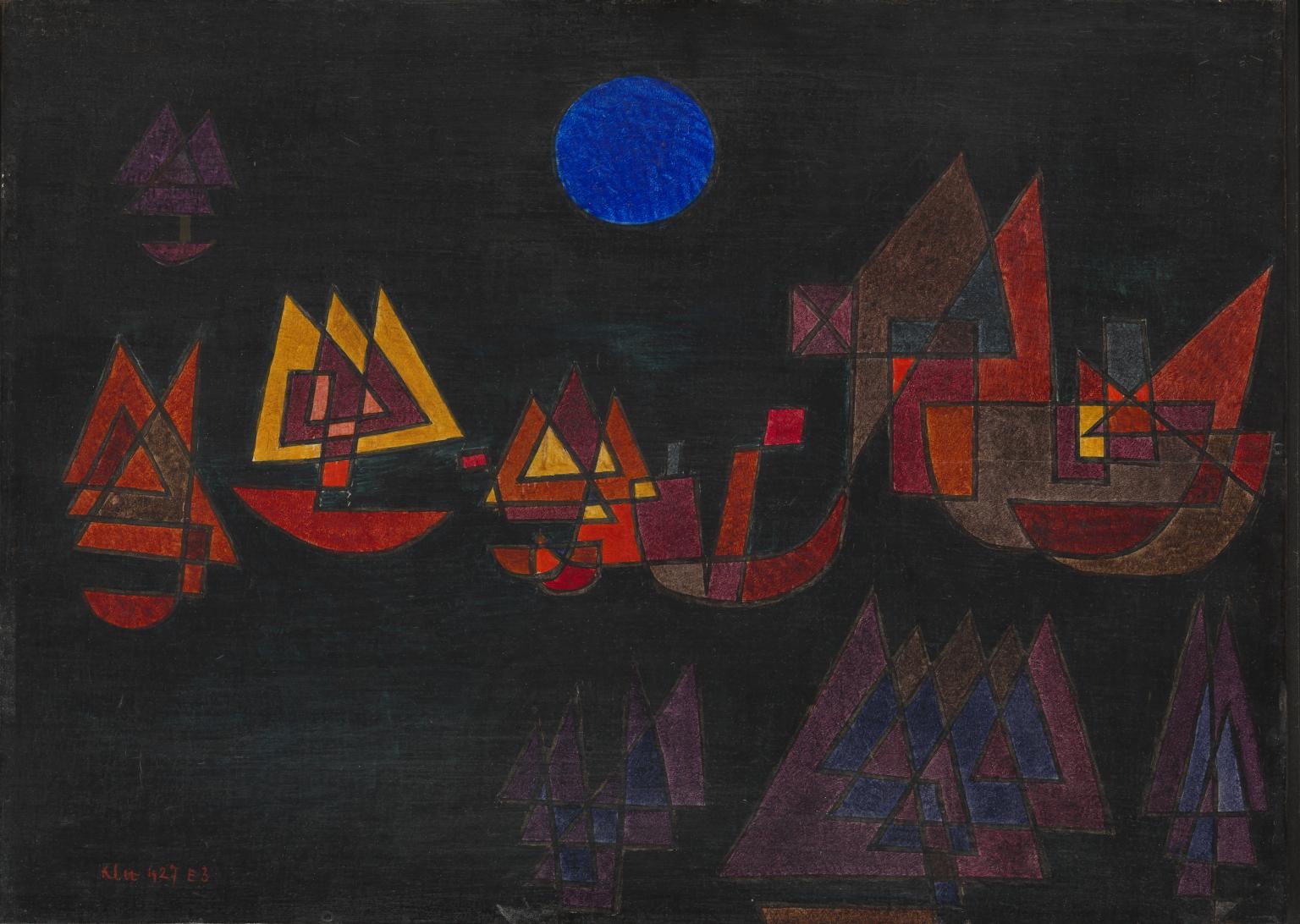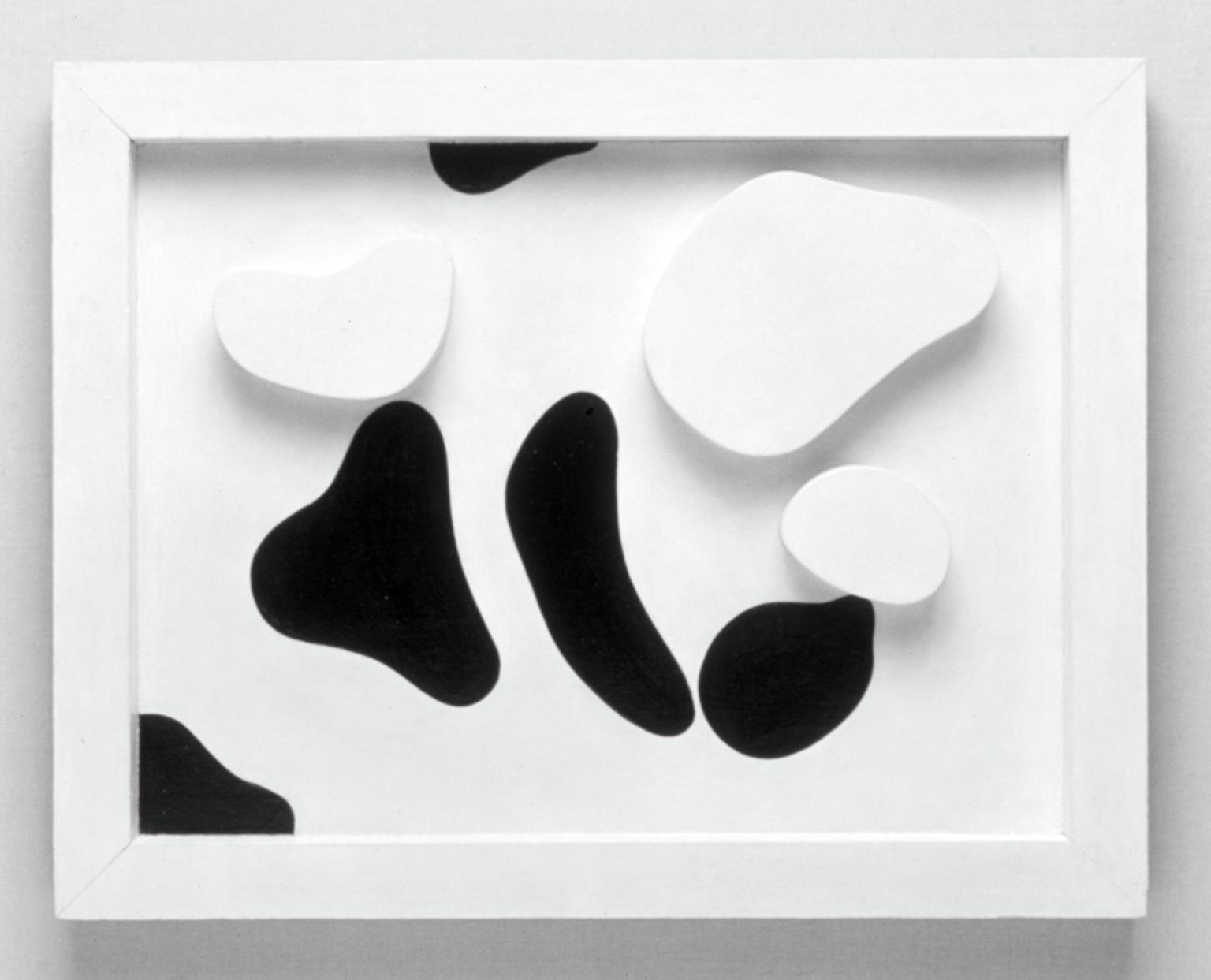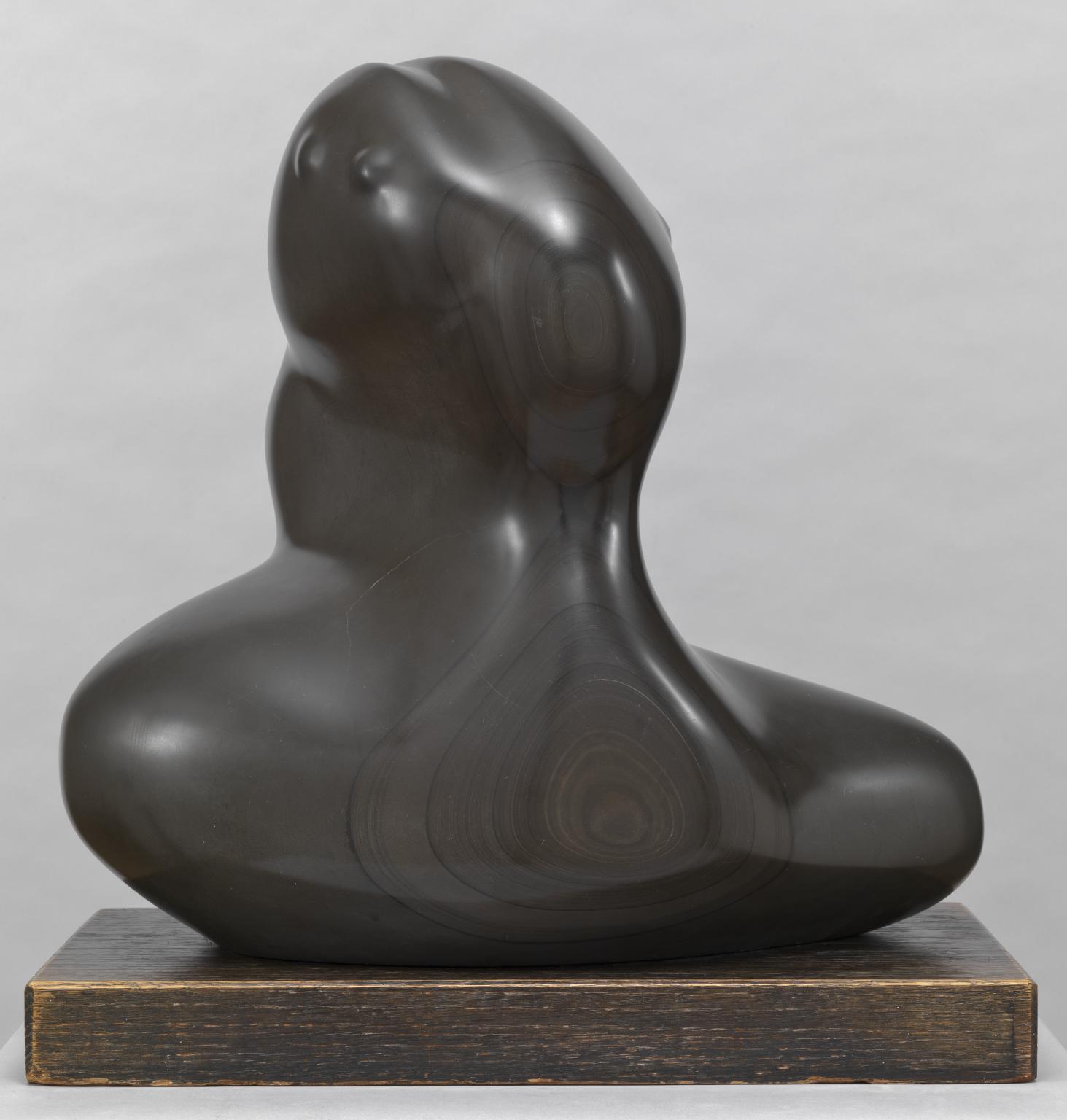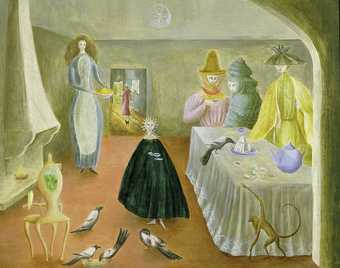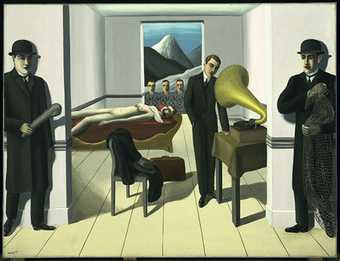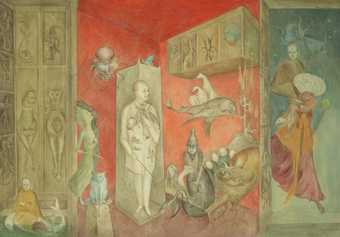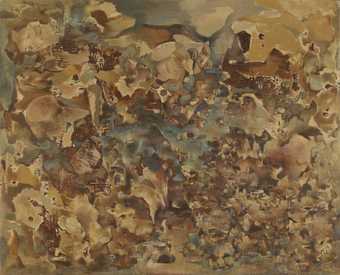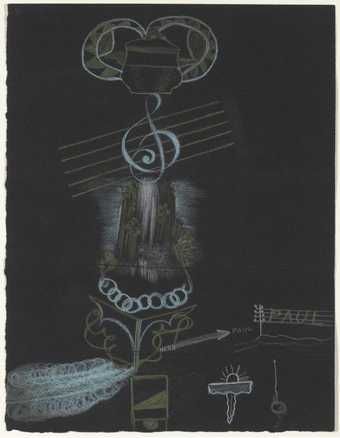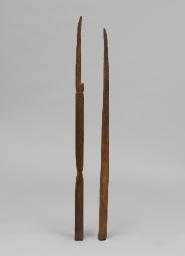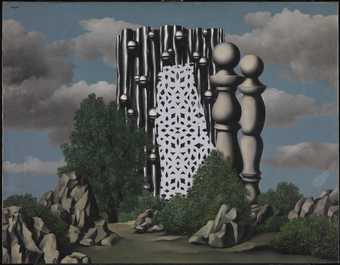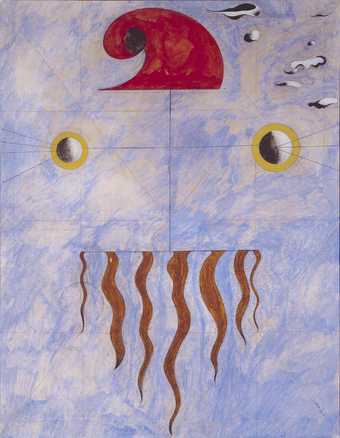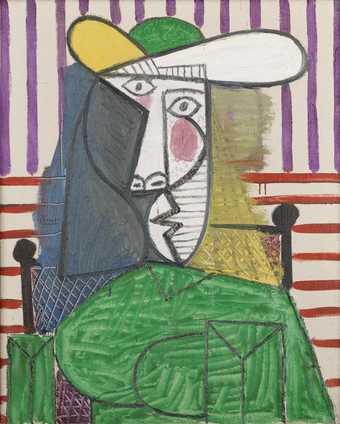12 rooms in In the Studio
See surrealist artworks made by the original Paris-based group and other international artists
The surrealist group were inspired by dreams and the unconscious mind. This selection includes work by members of the original Paris-based group, as well as international artists who developed their own approaches to the irrational.
The poet André Breton published the First Manifesto of Surrealism in Paris in 1924 and remained at the movement’s heart until his death in 1966. Breton had been stimulated by the theories of Sigmund Freud, who suggested the existence of an unconscious mind, containing the ideas and emotions that our conscious mind refuses to acknowledge. Dreams were one of the ways in which such repressed feelings could be brought to the surface. Breton and his associates argued that artists and writers should actively seek to unlock the unconscious, releasing hidden desires and irrational love, the delirium of obsession and madness.
Surrealism never became a shared artistic style. Some artists used highly realistic means to depict the imagery of dreams. Others made abstract works generated through ‘automatic’ techniques conceived without prepared themes or correction in order to avoid the control of the conscious mind. The power of the irrational was harnessed by artists across the world. Over time, groups and individuals in Brussels, Cairo, Mexico City, Prague, Tokyo and elsewhere were drawn to the uncensored creative impulses suggested by the ‘revolution of the mind’.
The organisation of works in this room reflects the surrealists’ own approach. The International Surrealist Exhibition of 1936 introduced the movement to London by setting dissimilar works densely against each other. Visitors were invited to immerse themselves in unexpected conjunctions and, in the words of artist Salvador Dalí, ‘to descend to the subconscious’.
Art in this room
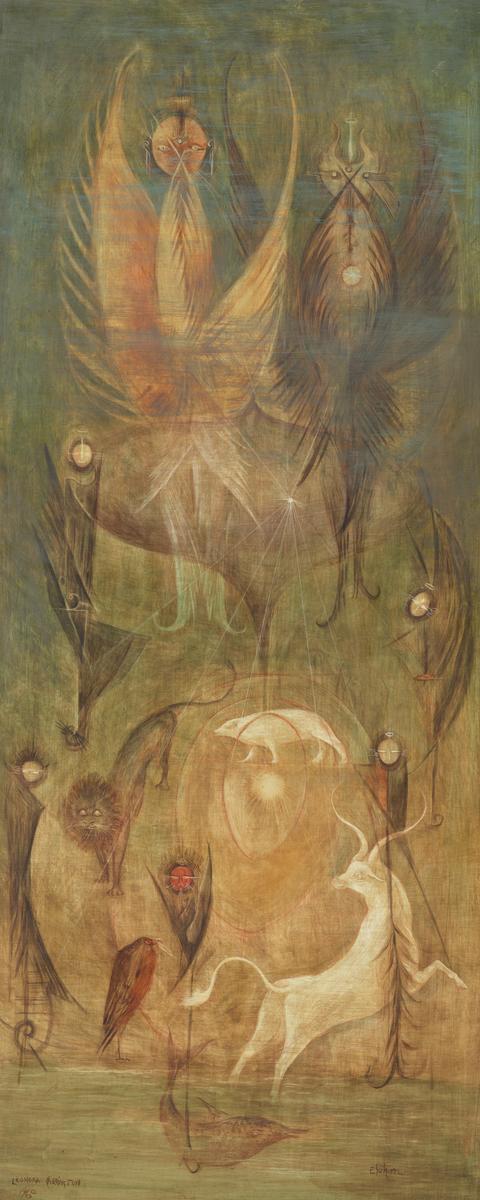
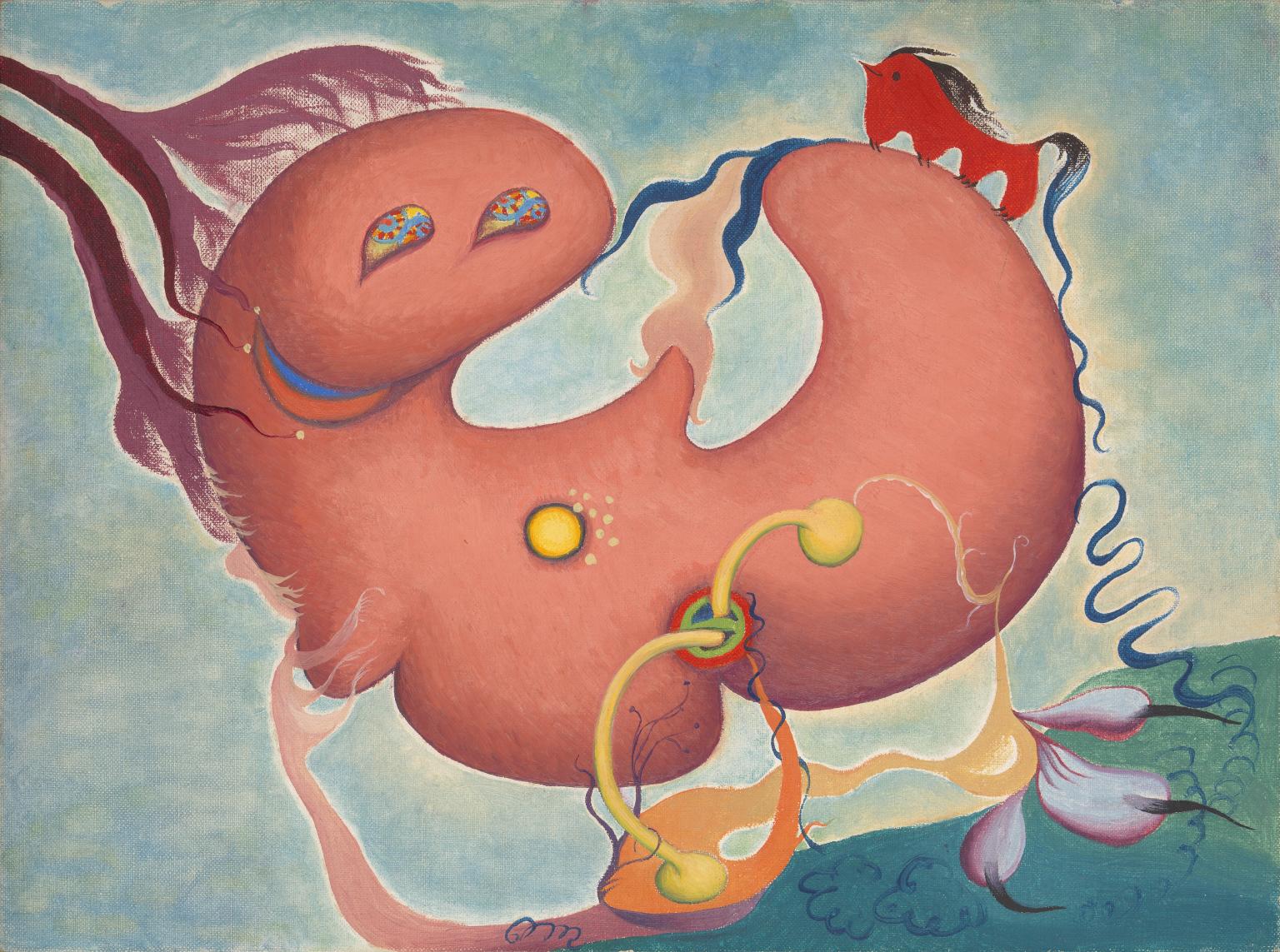
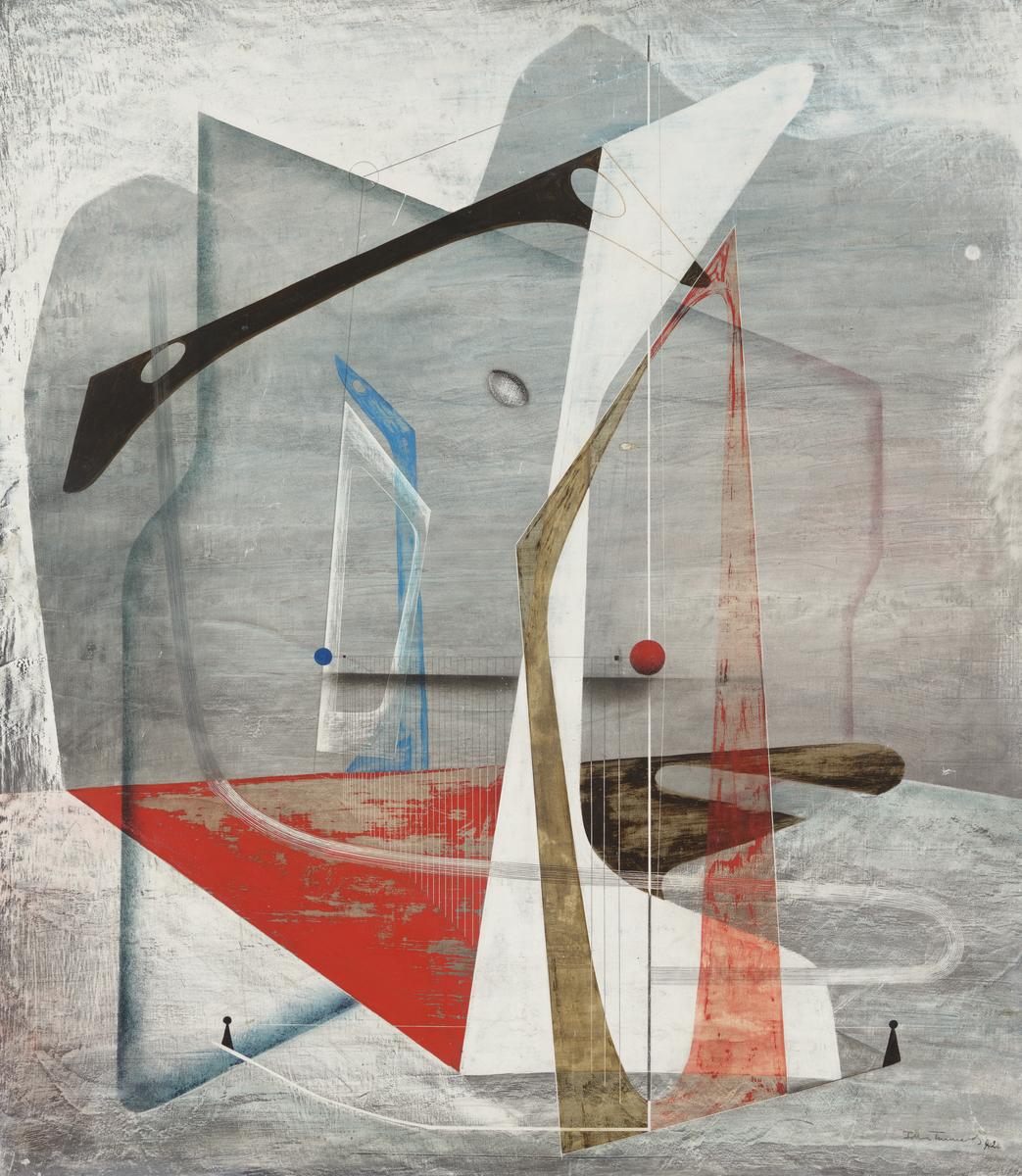
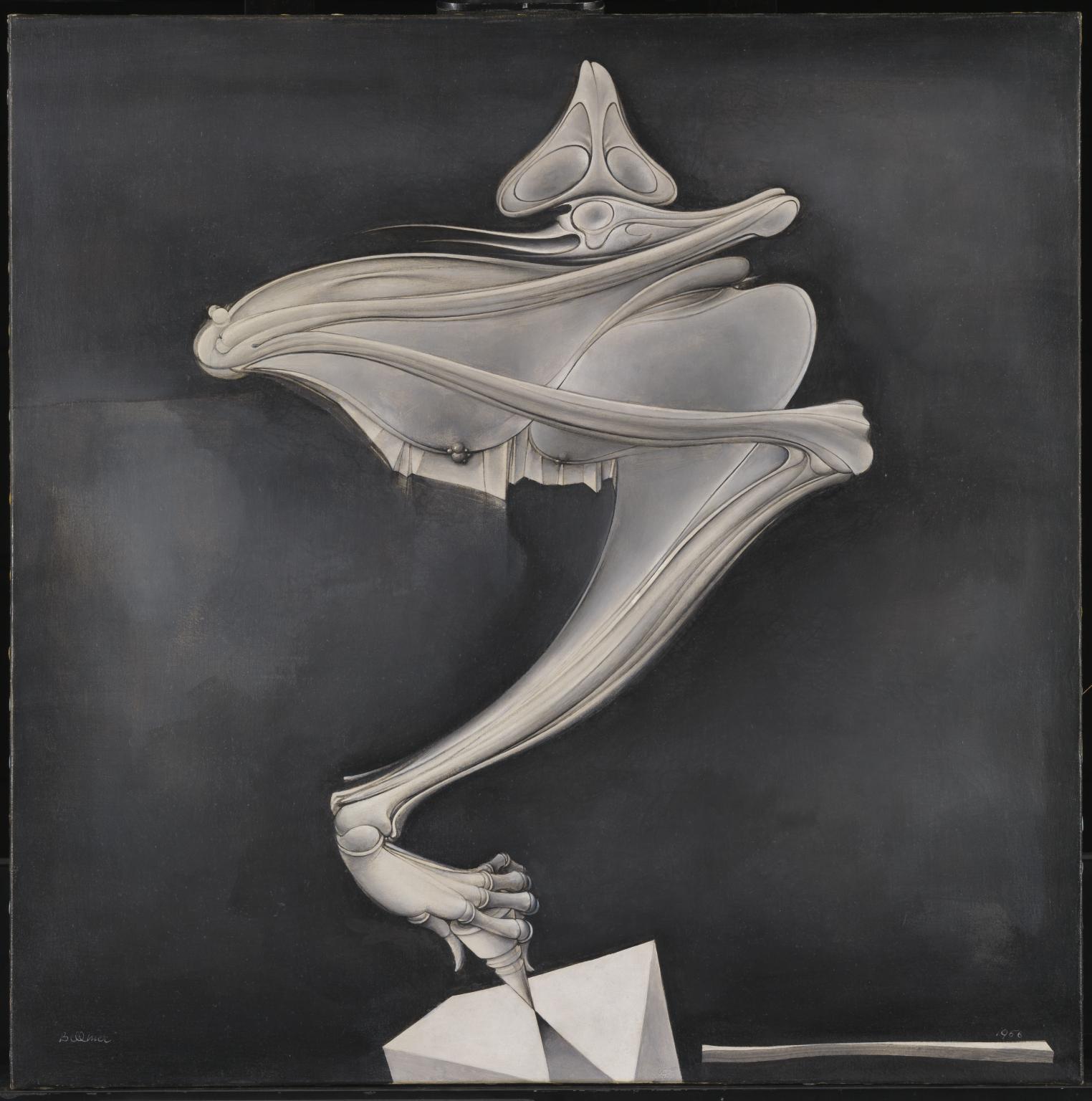


You've viewed 6/28 artworks
You've viewed 28/28 artworks
We recommend
-
Love, friendship & rivalry: Surreal friends
Who were the great female surrealists?
-
Storm Thorgerson on Magritte
The designer for the cover of Pink Floyd’s ‘Dark Side of the Moon’ discusses Magritte
-
Surrealism
What has a lobster got in common with a telephone? Find out here!
-
Something borrowed, something new
A look at Magritte’s artistic sources

